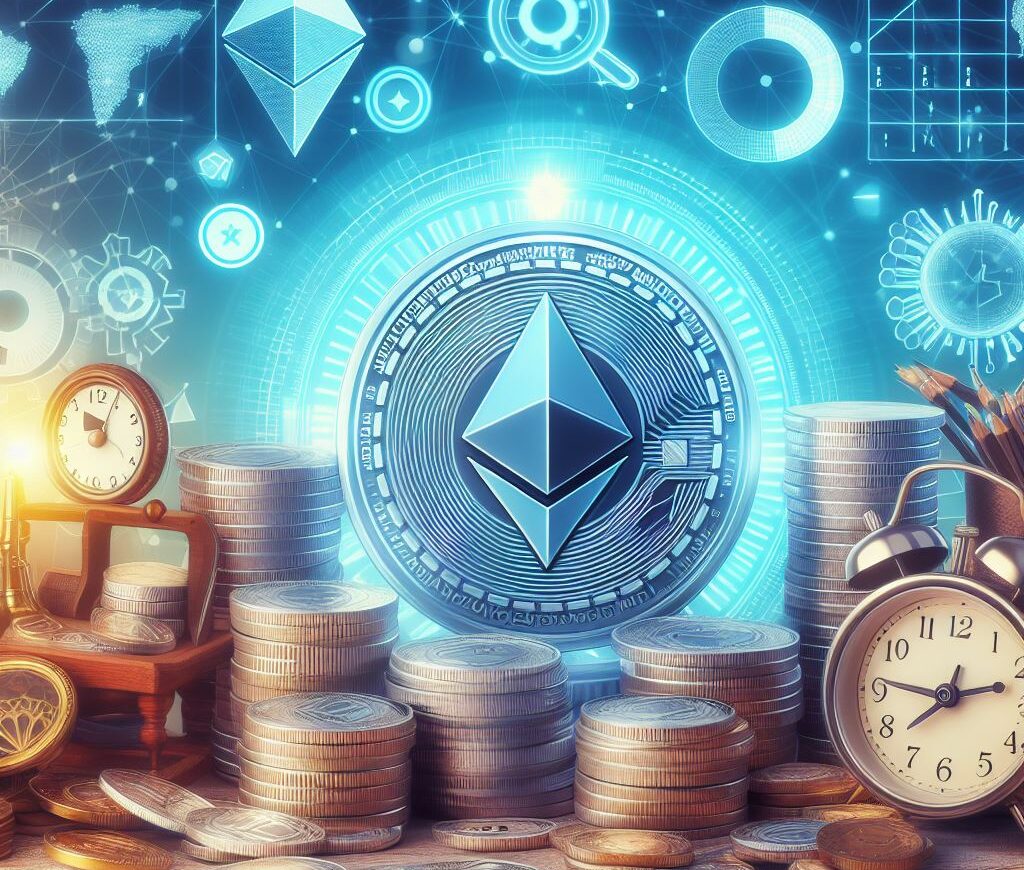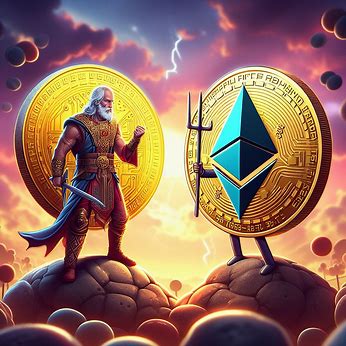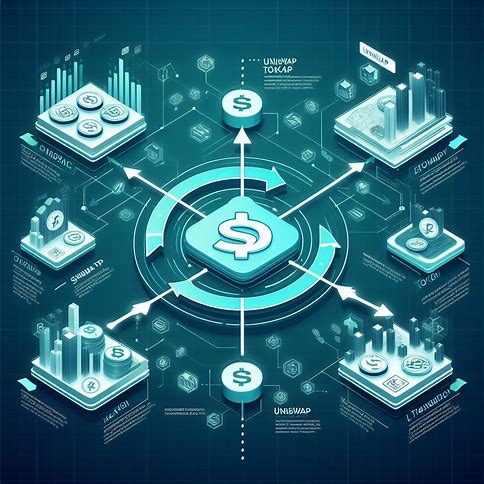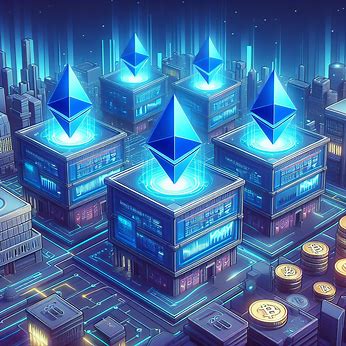Ethereum is the second-largest blockchain platform after Bitcoin, and it has become very popular since its inception in 2015. As a decentralized, open-source platform, Ethereum enables developers to build and deploy smart contracts and decentralized applications (dApps).
What is Ethereum?
Ethereum is a decentralized, open-source blockchain platform that enables the creation and execution of smart contracts and dApps. It was proposed in 2013 by programmer Vitalik Buterin and officially launched in 2015. Unlike Bitcoin, which primarily serves as a digital currency, Ethereum’s purpose is to provide a platform for building decentralized applications.
Smart Contracts
One of the key features of Ethereum is its support for smart contracts. A smart contract is a self-executing contract with the terms of the agreement directly written into code. Once deployed on the Ethereum blockchain, a smart contract automatically executes when predetermined conditions are met, without the need for intermediaries or central authorities.
Smart contracts have the potential to revolutionize various industries by streamlining processes, reducing costs, and increasing transparency. They can be used for a wide range of applications, such as financial services, supply chain management, voting systems, and more.
Decentralized Applications (dApps)
Ethereum’s ability to run smart contracts has paved the way for the development of decentralized applications (dApps). A dApp is an application that runs on a decentralized network, such as the Ethereum blockchain, rather than on a single computer or server.
dApps have several advantages over traditional centralized applications:
1. Decentralization: dApps are not controlled by any single entity, making them resistant to censorship and tampering.
2. Transparency: The code and transactions of a dApp are visible on the blockchain, ensuring transparency and accountability.
3. Security: dApps benefit from the security features of the underlying blockchain, making them less vulnerable to hacks and attacks.
Some popular examples of dApps built on Ethereum include:
Uniswap:
A decentralized exchange (DEX) for trading cryptocurrencies.
MakerDAO:
A decentralized lending platform that enables users to borrow and lend cryptocurrency.
CryptoKitties: A
blockchain-based game that allows users to collect, breed, and trade virtual cats.
Related: How to Buy Ethereum on eToro
Ethereum’s Native Cryptocurrency: Ether (ETH)
Ether (ETH) is the native cryptocurrency of the Ethereum blockchain. It serves as the fuel for the Ethereum network, used to pay for transaction fees and computational services. Whenever someone wants to execute a smart contract or perform a transaction on the Ethereum blockchain, they need to pay a certain amount of ETH as a fee, known as “gas.”
Apart from its utility within the Ethereum ecosystem, ETH is also traded on cryptocurrency exchanges as a digital asset. Its value has grown significantly since Ethereum’s launch, making it one of the most valuable cryptocurrencies by market capitalization.
Ethereum’s Consensus Mechanism
Like Bitcoin, Ethereum currently uses a Proof-of-Work (PoW) consensus mechanism to validate transactions and add new blocks to the blockchain. In PoW, miners compete to solve complex mathematical problems using computational power. The first miner to solve the problem gets to add the next block and receive a reward in ETH.
However, Ethereum is in the process of transitioning to a Proof-of-Stake (PoS) consensus mechanism through an upgrade called Ethereum 2.0. In PoS, validators stake their ETH as collateral to validate transactions and create new blocks. This shift aims to improve Ethereum’s scalability, security, and energy efficiency.
Ethereum’s Scalability Challenges and Solutions
One of the main challenges faced by Ethereum is scalability. As the network grows and more dApps are built on top of it, the blockchain can become congested, leading to slower transaction times and higher gas fees. This has been a major pain point for Ethereum users, particularly during periods of high network activity.
To address these scalability issues, the Ethereum community is working on several solutions:
1. Sharding: This involves splitting the Ethereum blockchain into multiple smaller chains called shards, which can process transactions in parallel. This can significantly increase the network’s throughput and reduce congestion.
2. Layer 2 Solutions: Layer 2 solutions, such as rollups and state channels, aim to offload some of the transaction processing from the main Ethereum blockchain to a secondary layer. This can help reduce gas fees and improve transaction speeds while still leveraging the security of the underlying blockchain.
3. Ethereum 2.0: The ongoing upgrade to Ethereum 2.0, which includes the shift to PoS and the implementation of sharding, is expected to greatly enhance Ethereum’s scalability and performance
Ethereum’s Ecosystem and Community
One of Ethereum’s greatest strengths is its vibrant and active ecosystem and community. Ethereum has attracted a large number of developers, entrepreneurs, and users who are building and interacting with dApps on the platform.
The Ethereum ecosystem consists of various components, including:
1. Development Tools: Ethereum provides a range of development tools and frameworks, such as Solidity (a programming language for writing smart contracts), Truffle (a development framework), and Metamask (a browser extension for interacting with dApps).
2. Decentralized Finance (DeFi): Ethereum has become the foundation for the growing DeFi movement, which aims to create a more open, transparent, and accessible financial system using blockchain technology. DeFi applications built on Ethereum enable users to borrow, lend, trade, and invest in cryptocurrencies without relying on traditional financial intermediaries.
3. Non-Fungible Tokens (NFTs): Ethereum has been at the forefront of the NFT boom, with many popular NFT projects and marketplaces built on the Ethereum blockchain. NFTs are unique digital assets that represent ownership of items such as artwork, collectibles, and virtual real estate.
4. Enterprise Adoption: Ethereum has garnered significant interest from enterprises and institutions looking to leverage blockchain technology for various use cases. The Enterprise Ethereum Alliance (EEA) is a consortium of companies working together to develop Ethereum-based solutions for the enterprise sector.
Ethereum’s community actively contributes to the development and growth of the Ethereum ecosystem through various channels, such as online forums, social media, hackathons, and conferences like Devcon and EthCC.
The Future of Ethereum
Ethereum has come a long way since its launch in 2015, and its future looks promising. With the ongoing development of Ethereum 2.0 and the growing adoption of blockchain technology across industries, Ethereum is well-positioned to maintain its leadership in the smart contract and dApp space.
Some areas to watch out for in Ethereum’s future include:
1. Scalability Improvements: As mentioned earlier, Ethereum 2.0 and other scalability solutions are expected to significantly enhance Ethereum’s performance and user experience.
2. Institutional Adoption: As more institutions and enterprises recognize the potential of blockchain technology, Ethereum may see increased adoption and investment from these entities.
3. Interoperability: Ethereum is working on improving interoperability with other blockchains, which could lead to a more connected and collaborative blockchain ecosystem.
4. Regulatory Developments: As the blockchain and cryptocurrency space matures, regulatory developments will play a crucial role in shaping Ethereum’s future. Clarity in regulations could help foster greater adoption and mainstream acceptance of Ethereum and its applications.
Frequently Asked Questions
What is the difference between Ethereum and Bitcoin
While both Ethereum and Bitcoin are decentralized blockchain platforms, they serve different purposes. Bitcoin is primarily designed as a digital currency and store of value, whereas Ethereum is a platform for building and deploying smart contracts and decentralized applications (dApps). Ethereum also has its own native cryptocurrency called Ether (ETH), which is used to fuel transactions and computations on the network.
How do i buy Ethereum
To buy Ethereum, you’ll need to use a cryptocurrency exchange. Some popular exchanges include Coinbase, Binance, and Kraken. You’ll need to create an account, complete any necessary verification steps, and then fund your account with fiat currency (e.g., USD or EUR) or another cryptocurrency. Once your account is funded, you can place an order to buy ETH.
What is a smart contract
A smart contract is a self-executing contract with the terms of the agreement directly written into code. It automatically executes when predetermined conditions are met, without the need for intermediaries or central authorities. Smart contracts are stored and processed on the Ethereum blockchain, enabling trustless and transparent transactions.
What is gas in Ethereum
In Ethereum, gas refers to the unit of measurement for the computational effort required to execute a transaction or smart contract. Gas fees are paid in Ether (ETH) and are used to compensate miners for the computing power they contribute to the network. The gas cost of a transaction depends on its complexity and the current network demand.
What is Ethereum 2.0?
Ethereum 2.0, also known as Eth2 or Serenity, is a major upgrade to the Ethereum blockchain that aims to improve its scalability, security, and sustainability. The upgrade involves a transition from a Proof-of-Work (PoW) to a Proof-of-Stake (PoS) consensus mechanism, as well as the implementation of sharding to enable parallel transaction processing. Ethereum 2.0 is being rolled out in multiple phases over several years.
Can I mine Ethereum?
Currently, Ethereum uses a Proof-of-Work (PoW) consensus mechanism, which allows miners to earn ETH by contributing computing power to the network. However, with the ongoing transition to Ethereum 2.0 and the shift to a Proof-of-Stake (PoS) consensus, mining will eventually become obsolete. In the future, users will be able to earn rewards by staking their ETH and becoming validators on the network.










